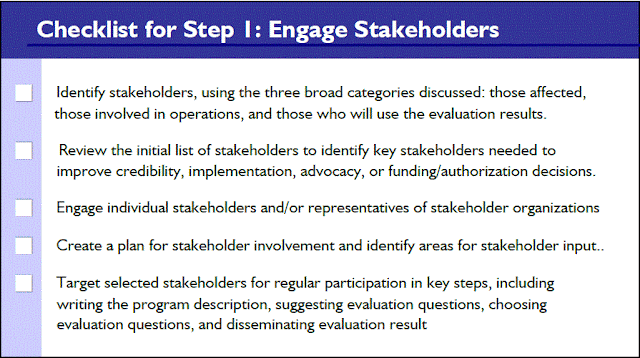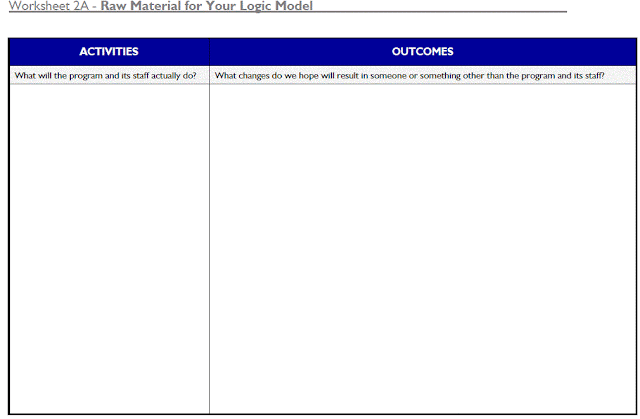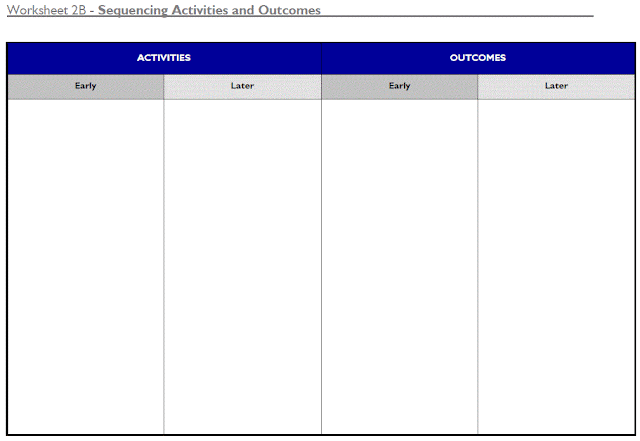Engage Stakeholders
What distinguishes program evaluation from research is the engagement of stakeholders. In research, the researchers remain objective and authoritative in planning the research, choosing participants, and developing questionnaires/interview questions. In contrast, in evaluation, the evaluators must work collaboratively with various stakeholders to design the evaluation, develop questions based on merit, worth or significance, and focus on the intended uses by intended users. Engaging stakeholders, mainly primary stakeholders, must be done in an on-going basis from the beginning to the end of the evaluation to ensure the accuracy and utility of the evaluation.
CDC offers a very helpful checklist in stakeholder engagement:
Identifying stakeholders is important step as it helps you design your evaluation samples and create questions to ask. CDC also offers a "Identifying Key Stakeholders" worksheet that you can fill your potential stakeholders. Based on your project, work with your group members to identifying your stakeholders based on these three categories:
Then, use the following worksheet to identify stakeholders that will increase the credibility, implement the interventions, advocate for changes, and fund/authorize the continuation or expansion of the program:
For each of the stakeholders identified, list all of the activities and/or outcomes that matter the most to them:
Describe the program
In evaluation, program description is similar to literature review in research--but evaluation needs both, the program description as well as literature review. CDC offers a very nice checklist of program description that will be helpful for your own program description.
Here is the checklist of what you should include in your program description:
To help you frame your logic model, here are the worksheet to help guide your design:
Focus the evaluation design
CDC also offers a helpful checklist for evaluation focus. This checklist is helpful for you to define your PURPOSE and to formulate your evaluation questions. It also reminds you the need to review evaluation questions with stakeholders, program managers, and program staff.
Tasks for this week:
1. Reach out to primary stakeholders or service providers including program managers and program staff to obtain information about the program being evaluated. Talking with the program staff will help you understand your program better and it's also a chance for you to ask them for their input as well as to obtain available documents or reports of the program. What we did last week was talking to stakeholders who are not involved in the program directly. What you will need to do this week is to talk to those who are working on the program in their day-to-day basis.
2. Meet with me to discuss your evaluation design.
3. Draft your IRB Human Subject Application.
4. Develop measures/questionnaires/interview questions for your evaluation.
5. Finalize your program theory or results chain after you talk to program staff on the ground.
What distinguishes program evaluation from research is the engagement of stakeholders. In research, the researchers remain objective and authoritative in planning the research, choosing participants, and developing questionnaires/interview questions. In contrast, in evaluation, the evaluators must work collaboratively with various stakeholders to design the evaluation, develop questions based on merit, worth or significance, and focus on the intended uses by intended users. Engaging stakeholders, mainly primary stakeholders, must be done in an on-going basis from the beginning to the end of the evaluation to ensure the accuracy and utility of the evaluation.
CDC offers a very helpful checklist in stakeholder engagement:
Identifying stakeholders is important step as it helps you design your evaluation samples and create questions to ask. CDC also offers a "Identifying Key Stakeholders" worksheet that you can fill your potential stakeholders. Based on your project, work with your group members to identifying your stakeholders based on these three categories:
Then, use the following worksheet to identify stakeholders that will increase the credibility, implement the interventions, advocate for changes, and fund/authorize the continuation or expansion of the program:
For each of the stakeholders identified, list all of the activities and/or outcomes that matter the most to them:
Describe the program
In evaluation, program description is similar to literature review in research--but evaluation needs both, the program description as well as literature review. CDC offers a very nice checklist of program description that will be helpful for your own program description.
Here is the checklist of what you should include in your program description:
To help you frame your logic model, here are the worksheet to help guide your design:
Focus the evaluation design
CDC also offers a helpful checklist for evaluation focus. This checklist is helpful for you to define your PURPOSE and to formulate your evaluation questions. It also reminds you the need to review evaluation questions with stakeholders, program managers, and program staff.
Tasks for this week:
1. Reach out to primary stakeholders or service providers including program managers and program staff to obtain information about the program being evaluated. Talking with the program staff will help you understand your program better and it's also a chance for you to ask them for their input as well as to obtain available documents or reports of the program. What we did last week was talking to stakeholders who are not involved in the program directly. What you will need to do this week is to talk to those who are working on the program in their day-to-day basis.
2. Meet with me to discuss your evaluation design.
3. Draft your IRB Human Subject Application.
4. Develop measures/questionnaires/interview questions for your evaluation.
5. Finalize your program theory or results chain after you talk to program staff on the ground.













